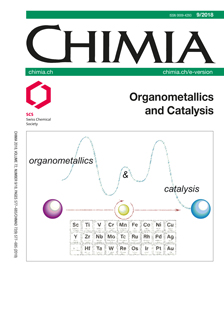New Directions in Transition Metal Catalyzed Carbonylation Chemistry
DOI:
https://doi.org/10.2533/chimia.2018.606Keywords:
Carbonylation, Catalysis, Fluorination, Isotope labeling, Nickel, PalladiumAbstract
Carbon monoxide (CO) represents an important C1-building block for the construction of some of the most fundamental chemical functionalities carrying a carbon–oxygen double bond. Transition metal catalysis plays a key role in promoting such transformations. We have earlier shown that the combination of palladium catalysis with CO releasing molecules and the two-chamber reactor, COware, provides a convenient and safe means for performing traditional Pd-catalyzed carbonylative couplings, as well as being a platform for the discovery of new carbonylation reactions. Furthermore, the method can be adapted to 13C- and 14C-isotope labeling, as well as providing for a suitable setting for developing efficient carbonylation reactions with 11CO. Herein, we provide a short overview of our latest findings in this area with emphasis on carbonylative couplings with fluorinated building blocks, but also discuss our efforts to develop viable Ni-catalyzed carbonylations with aliphatic substrates, which can be performed efficiently under low CO partial pressures.Downloads
Published
2018-09-01
Issue
Section
Scientific Articles
License
Copyright (c) 2018 Swiss Chemical Society

This work is licensed under a Creative Commons Attribution-NonCommercial 4.0 International License.
How to Cite
[1]
Chimia 2018, 72, 606, DOI: 10.2533/chimia.2018.606.







